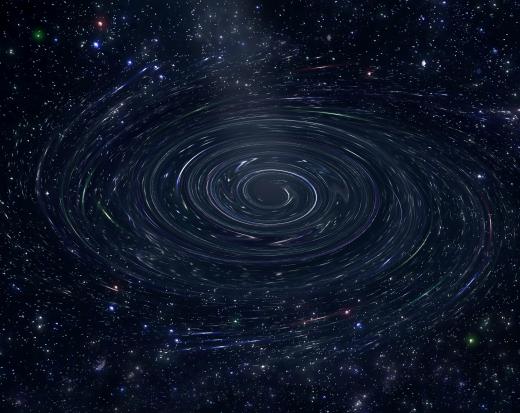What is Sagittarius a*?
 Michael Anissimov
Michael Anissimov
Sagittarius A* (pronounced "A-star") is a region in the center of our galaxy, approximately as wide as the orbit of Pluto, containing 3.7 million solar masses of material. Located near the galactic center, Sagittarius A* is suspected by astronomers to be a supermassive black hole, serving as the center of gravity for the entire galaxy. Sagittarius A* is closely orbited by at least a dozen stars, the trajectories of which have been used to estimate its mass. It may even be orbited by the first observed intermediate-mass black hole, GCIRS 13E, which is estimated at 1,300 solar masses.
As the mass of a black hole increases, the radius of its event horizon increases at a linear rate, but the density decreases as the cube of the radius. So, while black holes like Sagittarius A* are very massive, when you count the huge area of the event horizon, estimated at 6.25 light-hours (45 AU) or about 4.2 billion miles, the average density of the hole is no greater than that of air! Stellar-mass black holes have much greater densities behind their event horizon.

Sagittarius A* is located approximately 25,000 light years away, or half a galactic radius, at the galaxy's center. It probably formed early on in the galaxy's history. We observe supermassive black holes like Sagittarius A* in the process of being formed in other, very distant galaxies. These phenomena are called quasars and blazars.
Because the central singularity in a supermassive black hole is located so far from the event horizon, an astronaut falling into it would not experience spaghettification until deep inside the hole. The inside of a black hole would be a strange place -- with light orbiting the hole at a rapid rate, you would be constantly treated to a repetitive blur of objects in its grasp. Light from the outside would first look like only a hemisphere, with darkness all behind, then the hemisphere would get progressively smaller, becoming a little circle and eventually a point. Falling into a black hole would not be fun!
AS FEATURED ON:
AS FEATURED ON:












Discuss this Article
Post your comments